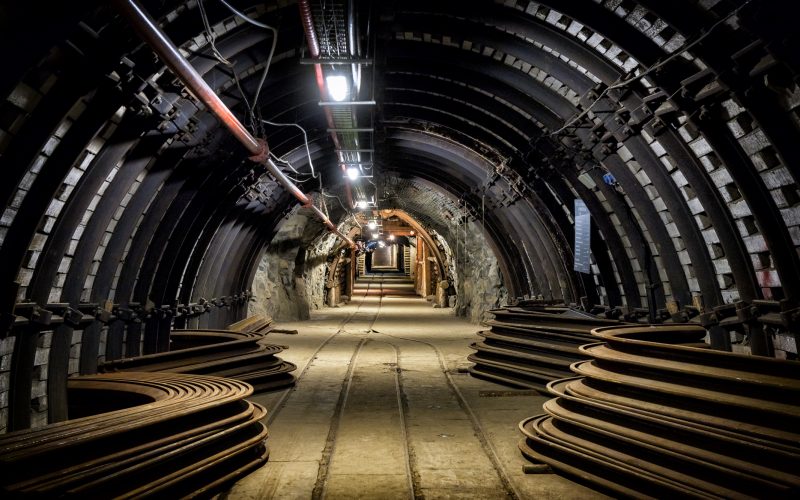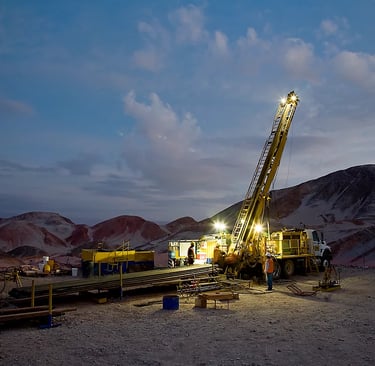Anhui Feichun Special Cable Co.,Ltd Li.wang@feichuncables.com
Powering South Africa's Mines: The SANS 1520-1 Type 41 Flexible Mining Trailing Cable
Feichun SANS 1520-1 Type 41 640/1100V flexible mining trailing cable — engineered for South Africa's mining sector. Learn about cable specifications, applications, durability, and answers to mining cable FAQs.
Li.wang@Feichun Cable
7/1/20254 min read


South Africa is globally renowned for its rich mineral reserves and extensive mining industry. From the deep-level gold mines of Gauteng to the vast platinum belt of the North West and Limpopo provinces, South Africa’s mining operations demand high-performance electrical infrastructure. One critical component of this infrastructure is the SANS 1520-1 Type 41 cable – a flexible, low-voltage mining trailing cable specifically engineered to operate in harsh, high-stress environments.
Whether supplying power to shuttle cars in deep shafts or mobile crushers in surface mining pits, the Type 41 cable has earned a strong reputation for durability, safety, and performance. This article will explore its features, compliance with SANS 1520-1, applications in South African mining, electrical parameters, and frequently asked questions from the field.
Overview of the SANS 1520-1 Standard
The South African National Standard (SANS) 1520-1 governs flexible electric trailing cables used in mining operations. Administered by the South African Bureau of Standards (SABS), this standard is essential in ensuring electrical safety, mechanical robustness, and longevity of mining cables.
What SANS 1520-1 Covers
Flexible trailing cables for underground and surface mining
Designed to withstand frequent bending, dragging, reeling, and torsion
Requirements for construction, insulation, voltage class, flame resistance, and more
Voltage Classes
SANS 1520-1 includes several cable types. The Type 41 model is classified under:
640/1100 V – suited for low-voltage systems commonly found in underground mining equipment
(Other types such as Type 61 and 66 cater to higher voltages, e.g., 1900/3300 V)
This standard ensures that trailing cables not only deliver electrical performance but also survive the mechanical abuses typical in the mining sector, including exposure to moisture, abrasive surfaces, chemicals, and vibration.
Key Features of the SANS 1520-1 Type 41 Cable
Construction Details
The Type 41 cable is available in 3-core and 4-core variants:
3-core: two power conductors + one pilot core
4-core: three power conductors + one pilot core
These cables are designed with flexibility and toughness in mind.
Material Components
Conductors: Fine-stranded tinned or bare copper for flexibility
Insulation: EPR (Ethylene Propylene Rubber) for high thermal resilience
Core Identification: Colour-coded cores for easy maintenance (e.g., black, yellow/green, number-marked)
Fillers: Non-hygroscopic, flame-retardant fillers to maintain shape
Inner Sheath: Elastomeric layer for additional protection and binding
Steel Reinforcement: Optional steel wire braid for added tensile strength
Outer Sheath: Chloroprene or NBR-based rubber for abrasion and oil resistance
Environmental Resistance
Operates effectively between –25°C and +90°C
Flame-retardant, UV-resistant, and non-wicking
Resists oils, greases, coal dust, slurry, and high humidity
Applications in South Africa's Mining and Industrial Sectors
Underground Mining Equipment
Longwall shearers, continuous miners, and drill rigs all depend on flexible power delivery that survives mechanical abuse.
Cables trail behind equipment in tight corridors and unstable terrain.
Surface Mining Operations
Used with mobile crushers, screeners, and loaders
Cables often drag across gravel, sand, and ore piles
Pumping and Ventilation Systems
Power supply for deep-level sump pumps, mine dewatering, and fans
Must operate continuously in damp or wet conditions
Conveyor Systems and Temporary Installations
Powers portable conveyor belts, generators, or lighting grids
Easily deployed and relocated due to its high flexibility
Reeling and Cable Handling Systems
Used in reeling drums for shovels, cranes, and stackers
Withstands torsional and cyclical tension
Durability and Performance in Harsh Environments
Mechanical Strength
Inner and outer sheaths resist puncture, tear, and deformation
Steel wire or textile reinforcements boost tensile resistance for vertical and horizontal pull
Environmental Tolerance
Performs in flood-prone shafts and dry dusty quarries
Chloroprene/NBR sheath resists oil, grease, fuel, and sulphur-rich atmospheres
Quality Assurance
SANS 1520-1-compliant cables undergo rigorous testing, including:
Dielectric withstand tests
Cold bend and elongation tests
Abrasion and flame resistance trials
Visual inspection and dimensional verification
Certified manufacturers may also be required to submit samples to NRCS (National Regulator for Compulsory Specifications) for periodic testing under LOA (Letter of Authority) compliance.
Frequently Asked Questions (FAQ)
Q1: Can Type 41 cables be used in coal mines prone to methane?
A: While Type 41 cables are flame-retardant, their use in gassy mines may require additional flameproofing or explosion-proof protocols. Always consult mine safety officers or SABS/DMRE regulations.
Q2: What is the expected lifespan of Type 41 in South African mines?
A: With proper handling and regular inspections, 5–8 years is a typical lifespan, even in abrasive and wet underground conditions.
Q3: What’s the difference between trailing and reeling cables?
A:
Trailing cables (like Type 41) drag behind mobile equipment.
Reeling cables are wound/unwound on drums.
While some cables are designed for both, always check mechanical specs and application fit.
Q4: Is it compatible with international mining equipment brands?
A: Yes. Type 41 cables follow IEC and ISO harmonised standards and are commonly used with machinery from Sandvik, Epiroc, Caterpillar, Komatsu, and others.
Q5: What if the cable sheath is damaged during operation?
A: Minor sheath damage can be repaired using approved splicing kits, but any core exposure, conductor damage, or insulation failure must result in immediate decommissioning to avoid hazards.
Q6: Does this cable meet B-BBEE and local procurement standards?
A: Several SABS-certified local manufacturers offer Type 41 cables that meet Broad-Based Black Economic Empowerment (B-BBEE) standards, supporting local content requirements for South African mining tenders.
Conclusion
The SANS 1520-1 Type 41 flexible mining trailing cable is an essential piece of South Africa’s mining puzzle. Designed to meet the challenges of underground mobility, mechanical strain, and environmental extremes, it offers a reliable power delivery solution across various mining and industrial applications.
From powering LHD vehicles in Limpopo’s platinum tunnels to keeping coal conveyor belts running in Mpumalanga, Type 41 cables provide flexibility, safety, and compliance — exactly what South Africa’s mining infrastructure demands.





Email Address: Li.wang@feichuncables.com
© 2025. All rights reserved.


One-click to Quickly Contact
Products
Offshore & Marine Cable
XLPE Cable
Contact
Company
Location:
Building A Private Science and Technology Park, Hefei Economic and Technological Development Zone, Anhui Province, China
